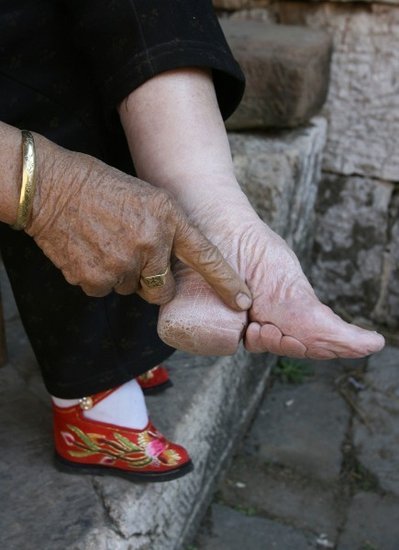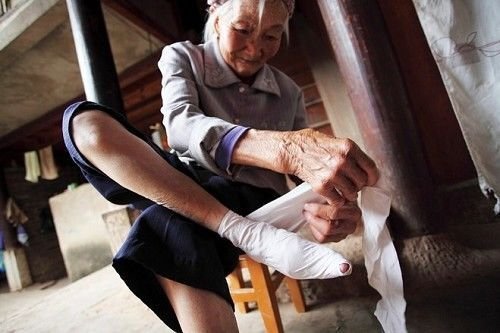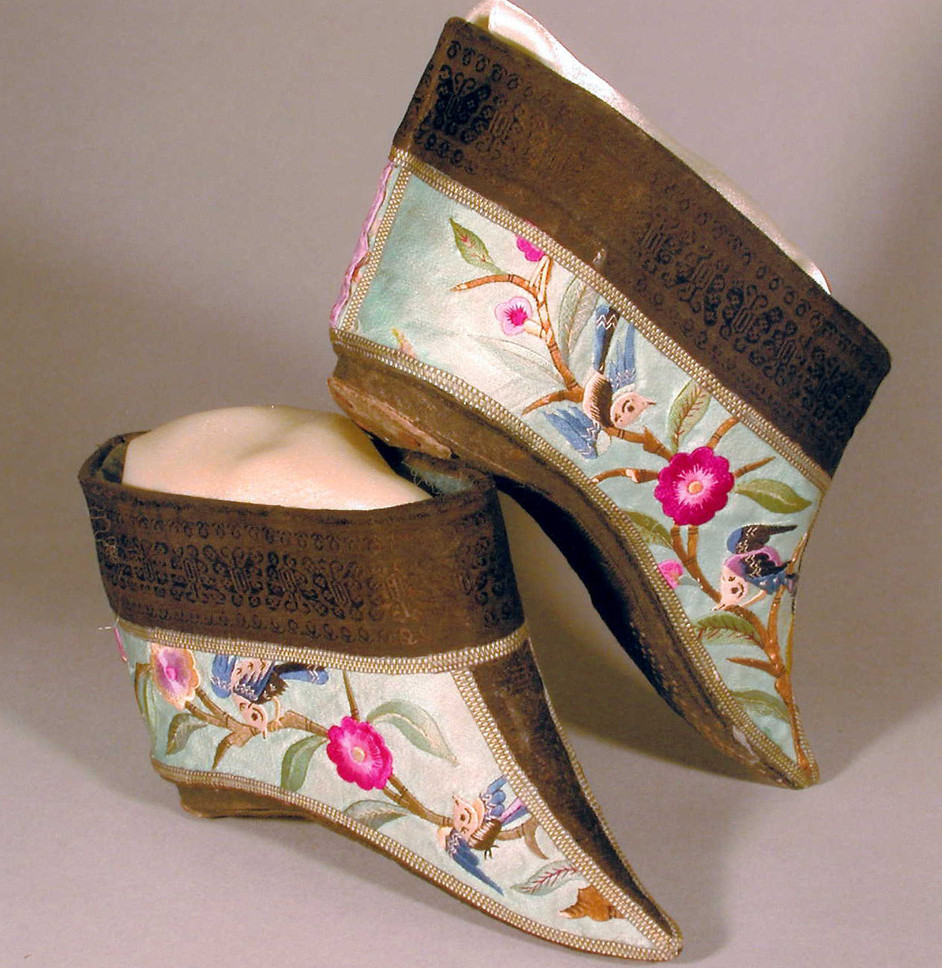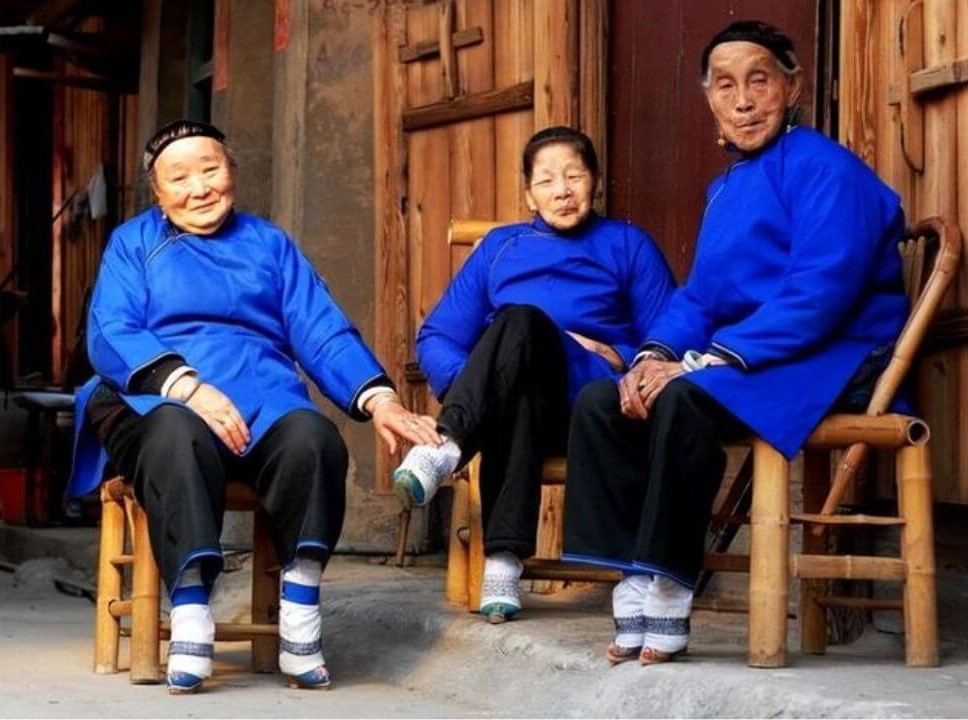Foot Binding in China - The Dungan Hui People of Gansu

Introduction to Three-Inch Golden Lotus Feet
Have you ever seen an adult foot that is only three inches long? In feudal China, they were called "three-inch golden lotus feet" (三寸金莲) and at that time you could see women everywhere with them. In today's modern China, the practice of shaping feet has all but disappeared because of its acute painfulness and lack of practicality, yet there remains one mysterious group of people who practice the tradition - the Dungan Hui people of Gansu.
However, behind the allure and mystique of these "golden lotus feet" lay a reality of immense pain and suffering. The process of foot binding, necessary to achieve this small size, was excruciating and often led to lifelong disabilities. Despite its popularity, the practice was fraught with health complications, leading to its eventual decline in modern times. In today's China, the tradition has largely vanished, viewed as a relic of a bygone era that is both painful and impractical.
Yet, intriguingly, there remains a group that clings to this ancient tradition – the Dungan Hui people of China. Their adherence to foot binding is not just a mere continuation of cultural practice, but a testament to their history, identity, and the complex interplay of tradition and modernity. This introduction aims to unravel the history, significance, and enduring legacy of the "three-inch golden lotus feet", exploring why and how this tradition persisted among the Dungan people, despite its disappearance elsewhere in China.

The Dungan Hiu People and Their Historical Journey
The Dungan people, descendants of people from China's Gansu and Shanxi provinces, have dwelt scattered across central Asia for over a century. After a failed uprising against the late Qing dynasty (1616-1912) in 1877, Dungans fled west across China to central Asia and carried with them many Qing Chinese fashions and traditions, such as foot binding.
Origins of Foot Binding in China
There are different versions of the origins of foot binding in China with little concrete evidence to help substantiate any of the claims. The widely-held story is that foot binding came into vogue in China when word spread around the imperial court of a prince who had become captivated by the adorable small feet of one of his concubines. It was said that wherever her feet stepped, an amazing golden lotus would bloom. The so-called "three-inch golden lotus feet"(三寸金莲) became fashionable among the aristocrats and then gradually became widely adopted by commoners as a sign of beauty and social status. However, since very few women naturally have three-inch feet and big feet had become undesirable, a drastic measure emerged to affect smaller feet - foot binding.
Another theory suggests that foot binding began during the Song Dynasty, potentially inspired by a court dancer named Yao Niang who bound her feet into the shape of a new moon to perform a ballet dance on a floor decorated with a lotus flower design. This performance is said to have caught the emperor's attention, and consequently, the practice started to be emulated by the upper class as a symbol of elegance and grace.
Beyond these legends, foot binding can also be understood as a reflection of the societal and gender dynamics of the time. In a society where women's value was often judged by their marriageability, foot binding became a physical manifestation of femininity and desirability. It was also a way to control women's mobility and ensure their chastity, which were considered vital attributes in a patrilineal society.
Over time, the practice of foot binding transcended its origins in the royal court and became a widespread custom among the general populace. It evolved from a privilege of the aristocracy to a societal norm expected of all girls, regardless of their social standing. By the late Qing Dynasty, the bound foot had become an entrenched standard of beauty and a prerequisite for marriage within most Chinese communities.

The Practice and Process of Foot Binding
As the practice of foot binding progressed, it was discovered that the binding would be more successful if the process was started before the arch of the foot fully developed. Therefore, young girls were started as early as possible, the optimum time being around the age of 4 or 5. A young girl's toes would be bent toward the sole of her foot and taped tightly with a long cotton bandage.
The bandage would bind the foot tight enough to break the bones, without any relief from the pain. Often, each binding would be sewn together to prevent the girl from loosening it, and the young girl would be forced to practice walking on her broken feet until she had become used to it and could walk gracefully. This process would be repeated over and over, rebinding the feet tighter and tighter each time. Finally, the feet would reach the desired length of three inches and forever to be able to fit in ornate golden lotus shoes.
The process of foot binding was not a one-time event but a prolonged ordeal. Every few days or weeks, the bandages would be removed, and the feet would be washed, a process that was both painful and necessary to prevent infection. Following this, the feet would be re-bound, each time more tightly than before. This cycle would be repeated over and over, rebinding the feet tighter and tighter each time.
The desired end result was a foot that measured no more than three inches in length, a size so small that it could fit into exquisitely ornate golden lotus shoes. These shoes, often beautifully embroidered, were as much a status symbol as the feet themselves. However, achieving this ideal was a process that could take several years, during which the girls would endure ongoing pain and suffering.
The consequences of foot binding extended beyond the physical pain. Women with bound feet were often severely limited in their mobility, making them dependent on their families. This dependency was seen as a virtue in a patriarchal society, as it reinforced traditional gender roles. Furthermore, bound feet became a prerequisite for marriage in many communities, with the size and shape of a woman’s foot often being a significant factor in her marriage prospects.
Despite its brutality, foot binding was a deeply entrenched cultural practice, upheld by social, familial, and economic pressures. It was a symbol of beauty, status, and eligibility, with its practice woven deeply into the fabric of Chinese society until its gradual decline in the early 20th century.

Modern Perception and the Dungan's Cultural Preservation
Ironically, nowadays people no longer crave extraordinarily small feet, but they do appreciate the beautiful golden lotus shoes that were created to house them. Like many things for the Dungan people of Gansu, foot binding is a matter of tradition and holding tight to the culture they were uprooted from when they were forced to flee west.

The Dungan Hiu People: Guardians of a Bygone Era
The culture the Dungans carried with them was much more valuable than the few possessions they were able to tote with them, and that same culture has been held much more tightly than the goods they fled with. They maintain many traditional practices, good and bad, so much so that walking among the Dungans today seems like walking through Chinese history.














